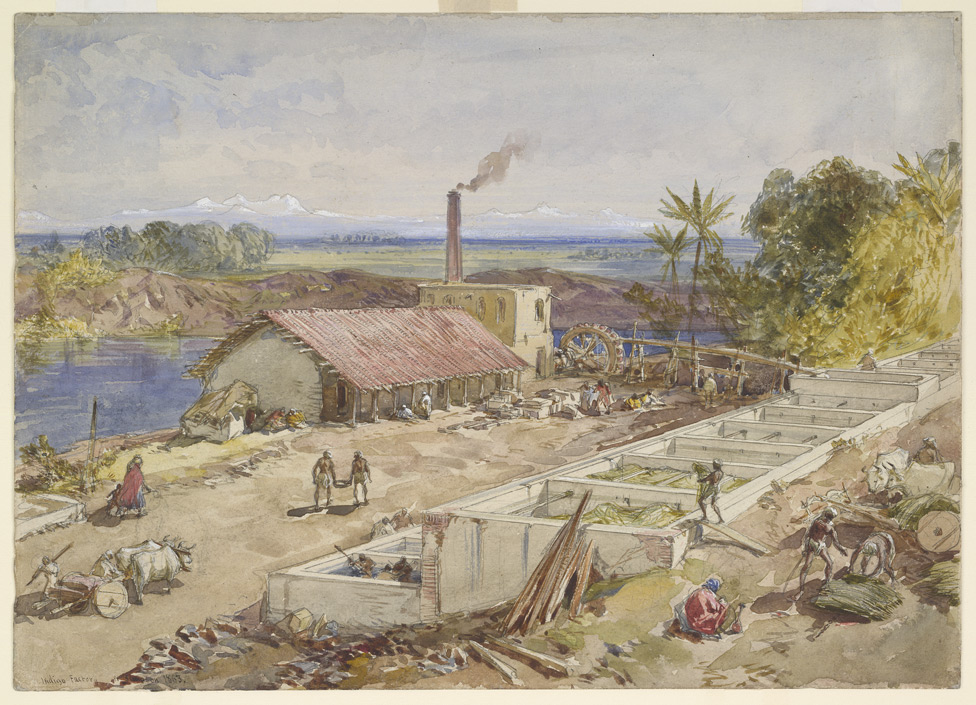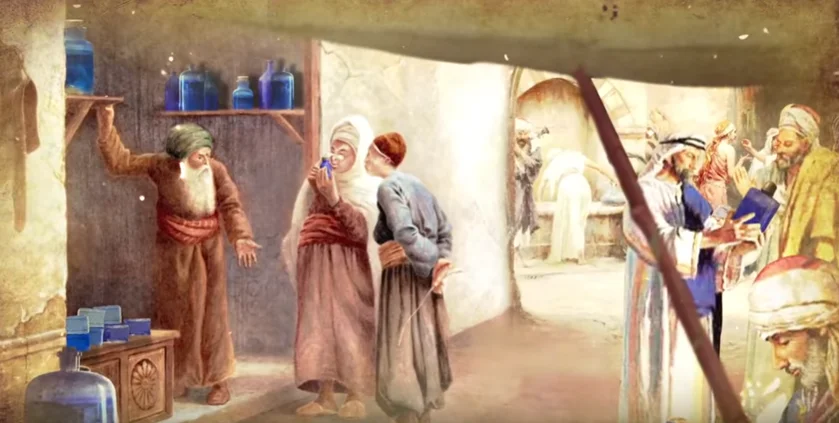
English Project On Indigo For Class 12 CBSE
Acknowledgement:
I would like to take this opportunity to express my heartfelt gratitude to all those who have supported and guided me throughout the process of completing this English project on Indigo.
First and foremost, I am immensely grateful to my English teacher and the school administration for providing me with the platform and resources to undertake this project. Their constant encouragement, guidance, and valuable feedback have been instrumental in shaping this project and enhancing my understanding of the subject.
I would also like to extend my deepest appreciation to my parents for their unwavering support and belief in my abilities. Their encouragement, motivation, and willingness to assist me whenever needed have been invaluable. Their understanding and patience during my research and writing process have made this project a reality.
Furthermore, I would like to acknowledge the various sources of information that have contributed significantly to the completion of this project. The extensive research material available online, including scholarly articles, research papers, and authentic websites, has been instrumental in providing me with a comprehensive understanding of the topic. Additionally, I am grateful for the offline sources such as books, journals, and interviews that have enriched my knowledge and allowed me to present a well-rounded project.
Lastly, I would like to express my appreciation to my classmates and friends who have supported me throughout this journey. Their discussions, insights, and constructive feedback have been invaluable in refining my ideas and strengthening the overall quality of this project.
Once again, I extend my deepest gratitude to all those mentioned above and to anyone else who has contributed, directly or indirectly, to the successful completion of this English project on Indigo. Their support and encouragement have been pivotal in making this project a meaningful and enriching experience.
Introduction:
Indigo, derived from the plant Indigofera tinctoria, holds a significant place in the annals of human history, spanning across centuries and cultures. Revered for its mesmerizing deep blue color, indigo has captivated the imagination of people across the globe. In this project, we embark on a journey to explore the profound significance of indigo as a natural dye, delving into its historical context, recognizing its importance in diverse industries, and uncovering its immense potential for sustainable development.
Indigo’s roots can be traced back to ancient civilizations, where its utilization and cultural significance flourished. The Egyptians, Greeks, and Romans were among the early civilizations that recognized the allure of indigo’s vibrant blue hue. However, it was during the Middle Ages and the Renaissance period that indigo truly came into prominence, particularly in Europe. The Age of Exploration further heightened the demand for indigo, as European powers sought new trade routes to access this prized dye. The cultivation of indigo gained particular prominence in colonial regions like India and the American colonies, shaping economies and cultural landscapes.
Indigo’s reputation as a natural dye stems from its ability to produce a deep blue color of remarkable vibrancy, longevity, and resistance to fading. Traditional dyeing techniques involve the fermentation and oxidation of indigo plant leaves. This unique chemical process allows indigo to bind with fibers, resulting in a color that withstands repeated washing and exposure to sunlight. The beauty and durability of indigo have made it a sought-after dye in various industries, including fashion, art, and cultural heritage preservation.
The importance of indigo cannot be overstated, as it has played a pivotal role in shaping the realms of art, fashion, and cultural expression throughout history. Symbolizing luxury, status, and beauty, indigo has adorned textiles and garments in countless cultures worldwide. Its association with craftsmanship, tradition, and cultural heritage has made indigo an enduring symbol of identity and artistic expression. Moreover, indigo holds immense economic value, particularly in the textile industry. The production of denim, in particular, heavily relies on indigo dye, making it an indispensable component of the global fashion market.
In recent times, the significance of indigo has extended beyond its aesthetic and economic value. The growing concern for sustainable practices has shed light on the ecological merits of indigo as a natural dye. As an organic and biodegradable alternative to synthetic dyes, indigo aligns with the principles of sustainability and environmental responsibility. The cultivation of indigo plants contributes to soil conservation, thanks to their extensive root systems that prevent erosion and enhance soil fertility. The revival of traditional indigo dyeing techniques further promotes cultural heritage preservation and supports local artisans, fostering community resilience and empowerment.
In this project, we delve deeper into the three pillars that sustain the indigo industry and pave the way for its continued growth and development. These pillars encompass raising awareness and education about indigo’s benefits, fostering collaboration and innovation among stakeholders, and creating market demand and support for indigo-based products. By exploring these pillars, we hope to inspire individuals, communities, and industries to embrace indigo’s potential for a more sustainable and vibrant future.
Through this English project on indigo, we aim to unravel the historical, cultural, and ecological significance of this remarkable natural dye. By understanding indigo’s rich past, acknowledging its importance in various sectors, and recognizing its potential for sustainable development, we can appreciate the enduring legacy and profound impact of indigo on our world today.

History of Indigo:
The history of indigo spans millennia, with its usage dating back to ancient civilizations. The Egyptians, Greeks, and Romans were among the early civilizations that recognized and utilized indigo’s remarkable qualities. These civilizations valued indigo not only for its vibrant blue color but also for its symbolism and association with power, spirituality, and status.
During the Middle Ages and the Renaissance period, indigo gained even more prominence, especially in Europe. Its deep blue shade became synonymous with luxury and elegance. Indigo-dyed fabrics were highly sought after and adorned the garments of royalty, nobility, and the wealthy elite. The trade of indigo became a lucrative business, with merchants traveling far and wide to acquire this precious dye.
The Age of Exploration, beginning in the 15th century, marked a significant turning point in the history of indigo. European powers, such as Spain, Portugal, and later the Dutch and the British, embarked on voyages to discover new trade routes and access valuable resources. Indigo, with its high demand and limited supply, became a sought-after commodity during this period. Explorers and traders ventured to distant lands in search of indigo-producing regions, particularly in Asia and the Americas.
Colonial regions played a vital role in the cultivation and production of indigo. India, under British colonial rule, became one of the major indigo-producing regions in the 18th and 19th centuries. British colonizers imposed indigo cultivation on Indian farmers, leading to widespread exploitation and the infamous Indigo Revolt. The American colonies, particularly South Carolina and Georgia, also saw the establishment of indigo plantations, contributing to the economic growth of these regions.
The indigo trade brought immense wealth and power to European colonial powers, while local farmers and workers often suffered under oppressive systems. The labor-intensive process of cultivating and processing indigo required a significant workforce, leading to the exploitation of enslaved individuals and indentured laborers in many indigo-producing regions.
The history of indigo is not without controversy and social upheaval. The quest for indigo and its economic dominance led to conflicts, resistance, and even uprisings. Movements against indigo production and exploitation emerged, advocating for fair treatment and the rights of the indigo workers.
Today, the historical legacy of indigo serves as a reminder of the complex dynamics of power, colonization, and economic exploitation. It also highlights the enduring allure of indigo as a dye, one that has captivated civilizations throughout time. Recognizing the historical context of indigo allows us to appreciate its cultural significance, understand its impact on societies, and foster a more inclusive and sustainable approach to its cultivation and usage in the present day.

Indigo as a Natural Dye:
Indigo dye is renowned for its distinctive deep blue color, which exhibits remarkable vibrancy, longevity, and resistance to fading. For centuries, indigo has been used extensively to dye textiles, including clothing, fabrics, and home furnishings, leaving an indelible mark on various cultures and traditions.
The process of dyeing with indigo involves a complex chemical transformation. The color is derived from the leaves of the indigo plant, scientifically known as Indigofera tinctoria. These leaves contain a compound called indican, which is converted into indigo dye through a series of enzymatic reactions.
Traditionally, the process of dyeing with indigo starts with the extraction of indigo pigment from the plant leaves. The leaves are harvested, bundled together, and allowed to ferment in water. During fermentation, enzymes present in the leaves break down the indican into its constituent parts, releasing indigo molecules. The resulting liquid is then exposed to air, initiating the oxidation process. As the liquid comes into contact with air, the indigo molecules transform into their insoluble form, which precipitates as fine blue particles.
To dye textiles, the fabric or yarn is immersed in the indigo dye bath, allowing the fibers to absorb the indigo pigment. Initially, the dyed material appears yellowish-green due to the presence of unoxidized indigo. However, upon exposure to air, the indigo molecules bond with the fibers and undergo further oxidation, resulting in the characteristic deep blue color. This oxidation process is often repeated multiple times to achieve the desired depth of color.
One of the remarkable properties of indigo dye is its ability to bond tightly with fibers, creating a color that withstands repeated washing and exposure to sunlight. This attribute has made indigo a preferred dye for garments, especially denim. The strong bond between indigo and the fabric ensures that the color remains intact even with frequent use and washing, giving indigo-dyed textiles their distinct longevity and enduring appeal.
Indigo’s unique chemistry and resistance to fading have also contributed to its historical significance. In cultures where indigo dyeing was prevalent, such as in Japan with the art of Shibori or in West Africa with Adire cloth, indigo-dyed textiles became highly valued and were often associated with cultural identity, status, and craftsmanship.
Moreover, the popularity of indigo as a natural dye has experienced a resurgence in recent years due to growing environmental concerns. Unlike synthetic dyes, which often release harmful chemicals and pollutants into the environment, indigo is biodegradable and eco-friendly. The use of natural indigo supports sustainable practices, minimizing the ecological impact of textile production.
In conclusion, indigo’s deep blue color, vibrancy, longevity, and resistance to fading make it a highly prized natural dye. Its historic use in textile dyeing, the intricate chemical processes involved, and its ability to bond with fibers contribute to its enduring appeal and cultural significance. With its eco-friendly nature, indigo stands as a sustainable alternative to synthetic dyes, further enhancing its value in today’s fashion and textile industries.

Importance of Indigo:
Indigo has held immense importance throughout history, spanning across various fields and cultures. Its significance in fashion, art, cultural heritage, and the economy cannot be understated. Let’s explore the multifaceted importance of indigo.
- Symbol of Luxury, Status, and Beauty: Indigo has long been associated with luxury, status, and beauty. In ancient times, the deep blue color of indigo-dyed fabrics signified wealth and social standing. Indigo textiles were reserved for the elite, representing opulence and sophistication. Even today, indigo holds a certain allure, conveying a sense of timeless elegance and refined aesthetics.
- Economic Value in the Textile Industry: Indigo plays a crucial role in the textile industry, particularly in the production of denim. Denim, a type of cotton fabric dyed with indigo, has become a global fashion staple. The demand for indigo-dyed denim and other indigo-based fabric products remains consistently high, contributing to the economic growth of regions involved in indigo cultivation, dye production, and textile manufacturing.
- Cultural Heritage Preservation: Indigo is deeply intertwined with cultural heritage and traditions. It has been used in various cultural practices and craftsmanship for centuries. From Japanese Shibori to Indian Bandhani, indigo dyeing techniques have been passed down through generations, preserving cultural identity and connecting communities to their rich histories. The importance of indigo in cultural heritage preservation lies in its ability to maintain and celebrate traditional arts and craftsmanship.
- Artistic Expression: Indigo’s captivating blue hue has inspired artists throughout history. Painters, photographers, and other visual artists have utilized indigo as a pigment or as a subject matter in their artworks. The unique and vivid shade of indigo evokes emotions, captures attention, and offers a distinctive visual appeal, making it a valuable tool for artistic expression.
- Environmental Sustainability: In recent times, indigo’s eco-friendly nature has garnered increased attention and importance. As a natural dye, indigo presents a sustainable alternative to synthetic dyes that often release harmful chemicals into the environment. The cultivation and production of indigo can be carried out using organic and environmentally friendly practices, minimizing the ecological impact of textile production. Embracing indigo as a natural dye aligns with the growing global concern for sustainable practices and responsible consumption.
Overall, indigo’s importance lies in its historical, cultural, economic, and environmental contributions. It symbolizes luxury and beauty, supports artistic expression, preserves cultural heritage, drives economic growth in the textile industry, and provides a sustainable alternative to synthetic dyes. Recognizing the multifaceted importance of indigo enables us to appreciate its diverse applications and encourages us to embrace its timeless allure while advocating for sustainable practices in the fashion and textile sectors.
Indigo Cultivation and Production:
Indigo cultivation is a specialized process that requires specific climatic conditions and careful management. Countries such as India, Bangladesh, and Nigeria have a long history of indigo cultivation and are known for their expertise in this field.
To cultivate indigo, farmers typically select well-drained soil with a pH range of 6 to 7. 5. The ideal climate for indigo cultivation is tropical or subtropical, with temperatures ranging between 20 to 35 degrees Celsius. Adequate water availability is crucial, and farmers often rely on irrigation methods to ensure the plants receive sufficient moisture throughout their growth cycle.
The cultivation of indigo plants involves sowing seeds or planting seedlings in prepared fields. These plants require regular care, including watering, weeding, and protection from pests and diseases. Indigo plants grow to a height of 1 to 2 meters, with elongated leaves that are rich in indican, the precursor to indigo dye.
Once the indigo plants reach maturity, which can take around 3 to 6 months depending on the variety and growing conditions, the leaves are harvested. Traditionally, the leaves are cut close to the ground to ensure the maximum yield of indigo pigment.
After harvesting, the leaves undergo a series of processes to extract the indigo dye. The first step is fermentation, where the leaves are packed in containers and moistened. This initiates a fermentation process, allowing enzymes present in the leaves to break down the indican into indoxyl, the precursor to indigo.
Following fermentation, the next step is dye extraction. The fermented leaves are mixed with water, often in large vats or pits, and stirred or agitated. This process releases the indoxyl, which oxidizes upon exposure to air, converting into insoluble indigo pigment. The mixture is then allowed to settle, and the indigo pigment precipitates at the bottom.
The resulting indigo pigment can be used directly for dyeing purposes or further processed into a soluble form. For dyeing, the indigo pigment is usually combined with a reducing agent, such as fructose or hydrosulfite, to convert it into a soluble form. This soluble indigo can then be used for dyeing fabrics, yarns, or other materials.
The cultivation and production of indigo require skill, knowledge, and experience. Traditional methods of indigo cultivation and dyeing have been passed down through generations, often involving close-knit communities and specialized artisans. These practices not only contribute to the cultural heritage but also highlight the importance of preserving traditional knowledge and sustainable agricultural practices.
In recent times, there has been a resurgence of interest in indigo cultivation and natural dyeing methods. Many farmers and artisans are adopting organic and sustainable practices, focusing on environmentally friendly cultivation techniques and exploring innovative approaches to dye extraction and dyeing processes.
The cultivation and production of indigo hold significant economic and cultural value. They contribute to local economies, support livelihoods, and provide opportunities for artisans and farmers to showcase their skills and heritage. Furthermore, the eco-friendly nature of indigo as a natural dye aligns with the growing demand for sustainable and ethical practices in the fashion and textile industries.
Indigo and Sustainable Development:
Indigo not only possesses historical and cultural significance but also offers immense potential for promoting sustainable development. Let’s explore the ways in which indigo contributes to sustainability.
- Soil Conservation and Improved Agriculture: The cultivation of indigo plants can play a crucial role in soil conservation. Indigofera tinctoria, the plant from which indigo is derived, has an extensive root system that helps prevent soil erosion. The roots bind the soil particles together, reducing the risk of soil runoff and loss. Additionally, indigo plants have the ability to fix nitrogen from the atmosphere, enriching the soil with this essential nutrient and enhancing its fertility. By incorporating indigo cultivation into agricultural practices, farmers can improve soil health and promote sustainable agriculture.
- Biodegradability and Reduced Environmental Impact: Indigo dye offers a sustainable alternative to synthetic dyes, which often contribute to environmental pollution. Indigo is biodegradable, meaning it can naturally break down over time without leaving harmful residues in the environment. In contrast, many synthetic dyes contain toxic chemicals that can leach into water bodies, causing pollution and harming aquatic ecosystems. The use of indigo dye, particularly in the textile industry, helps reduce the environmental impact associated with dyeing processes.
- Cultural Heritage Preservation: The revival of traditional indigo dyeing techniques not only contributes to sustainable development but also promotes cultural heritage preservation. Traditional indigo dyeing methods, such as Shibori in Japan or Batik in Indonesia, have been passed down through generations and are deeply rooted in local cultures. By embracing and supporting these traditional techniques, communities can preserve their cultural identities, knowledge, and craftsmanship. The revival of indigo dyeing traditions also provides economic opportunities for local artisans and supports sustainable livelihoods.
- Empowering Local Communities: The cultivation and processing of indigo can provide economic opportunities and support local communities. Small-scale farmers and artisans can engage in indigo cultivation, dye extraction, and dyeing processes, fostering community empowerment and sustainable livelihoods. By connecting indigo producers with fair trade practices and market access, sustainable development can be promoted at both the local and global levels.
In conclusion, indigo’s potential for sustainable development lies in its contribution to soil conservation, its biodegradability as a natural dye, the preservation of cultural heritage, and the empowerment of local communities. Embracing indigo cultivation, dyeing techniques, and supporting local artisans can create a more sustainable and inclusive approach to the fashion and textile industries. By recognizing the environmental and socio-cultural benefits of indigo, we can promote sustainable practices, preserve cultural diversity, and work towards a more sustainable future.
The successful implementation of indigo-based initiatives rests on three key pillars:
Awareness and Education: Spreading awareness about the benefits of indigo as a sustainable alternative to synthetic dyes is crucial. Educational programs, workshops, and awareness campaigns can inform individuals about the cultural, economic, and environmental aspects of indigo.
Collaboration and Innovation: Collaborative efforts between farmers, researchers, designers, and consumers are vital for the development of sustainable indigo supply chains. Innovation in indigo cultivation techniques, dye extraction methods, and dyeing processes can further enhance its viability.
Market Demand and Support: Creating a demand for indigo products and supporting local artisans, farmers, and businesses can strengthen the indigo industry. This can be achieved through promoting indigo-based products, encouraging ethical fashion choices, and providing market access for small-scale producers.
Conclusion:
Indigo, with its remarkable historical legacy, cultural significance, and sustainable potential, continues to captivate our attention and inspire us to explore its various dimensions. Throughout this project, we have delved into the significance of indigo as a natural dye, its role in different industries, and the three pillars that support its sustainable development. By embracing indigo, we not only preserve our rich heritage but also contribute to a greener and more conscious society.
Indigo’s journey as a natural dye has spanned centuries, captivating the imaginations of cultures worldwide. Its deep blue color has symbolized luxury, beauty, and status, creating a timeless allure that has endured through the ages. Furthermore, indigo’s economic value cannot be overlooked, particularly in the textile industry where it is widely used for producing denim and other fabric products.
However, indigo’s importance extends beyond its aesthetic and economic value. As a natural dye, indigo offers a sustainable alternative to synthetic dyes, which often pose significant environmental concerns. The cultivation of indigo plants contributes to soil conservation and fertility, while indigo dye itself is biodegradable, reducing its impact on the environment. The revival of traditional indigo dyeing techniques also supports cultural heritage preservation, empowering local artisans and communities.
Recognizing the three pillars of indigo – awareness and education, collaboration and innovation, and market demand and support – enables us to unlock the full potential of indigo’s sustainable development. By raising awareness about the benefits of indigo, promoting collaboration and innovation among stakeholders, and fostering market demand for indigo-based products, we can create a more sustainable and vibrant future.
Embracing indigo goes beyond its material and cultural aspects; it represents a commitment to preserving our heritage, supporting sustainable practices, and fostering a more conscious society. By choosing indigo as a natural dye, we contribute to a greener fashion industry and promote responsible consumption.
In conclusion, indigo’s rich history, cultural significance, and sustainable potential make it a captivating subject for study. By recognizing the importance of indigo as a natural dye, understanding its role in various industries, and embracing its three pillars, we can contribute to a more sustainable and vibrant future. Let us continue to explore the depths of indigo’s allure and harness its potential for the benefit of our environment, our communities, and future generations.
Certificate of Completion
Certificate of Completion
[Student’s Name][Class/Grade Level]This is to certify that I, [Student’s Name], a [Class/Grade Level] student, have successfully completed the project on “English Project On Indigo For Class 12 CBSE.” The project explores the fundamental principles and key aspects of the chosen topic, providing a comprehensive understanding of its significance and implications.
In this project, I delved into in-depth research and analysis, investigating various facets and relevant theories related to the chosen topic. I demonstrated dedication, diligence, and a high level of sincerity throughout the project’s completion.
Key Achievements:
Thoroughly researched and analyzed English Project On Indigo For Class 12 CBSE.
Examined the historical background and evolution of the subject matter.
Explored the contributions of notable figures in the field.
Investigated the key theories and principles associated with the topic.
Discussed practical applications and real-world implications.
Considered critical viewpoints and alternative theories, fostering a well-rounded understanding.
This project has significantly enhanced my knowledge and critical thinking skills in the chosen field of study. It reflects my commitment to academic excellence and the pursuit of knowledge.
Date: [Date of Completion]Signature: [Your Signature] [School/Institution Name][Teacher’s/Examiner’s Name and Signature]
In order to download the PDF, You must follow on Youtube. Once done, Click on Submit
Follow On YoutubeSubscribed? Click on Confirm
Download English Project On Indigo For Class 12 CBSE PDF






